A Diagnosis of Inclusion for all Women 35-65?
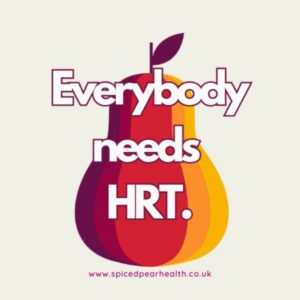

Ever feel like the universe has been preparing you just for this moment? Me neither really…but in this one weird way – yes!
So hear me out.
Thyroid disease as a result of a viral infection was first described in 1902 by Dr Fritz De Quervain and of course he and his ego called it De Quervain’s subacute thyroiditis. For some historical context, this predates the recognised role of iodine deficiency in thyroid disease! Skip ahead almost a century to deep in the 1990s and mini-me was sitting in a uni lecture room [front row & wearing fluro of course🤣] and over hundreds of hours (no scrap that zillions*^# of hours) of lecture content I was exposed to, the description of De Quervain’s Subacute Thyroiditis stood out and stayed stuck to me. I’ve brought it out for a twirl from time to time in the interim with some of my patients & in particular in correspondence with their docs. Skip ahead to the 2020s when we had this thing called. ‘a global pandemic’, and now everyone wants to talk viruses and their broader health implications & as a result, good ol’ Fritz, me and our buddy, De Quervain’s subacute thyroiditis, are all having a moment.
But just to recap – this is (clearly) not new.
What is new is the way this ‘virus of the moment’ has brought this Thyroid V Virus battle to the forefront. We are living an important chapter in history where all the textbook entries on De Quervain’s Subacute Thyroiditis are madly being rewritten to reflect the veracity of this viral attack on the gland and the wide-scale & varied damage that ensues over the months and years that follow. And so many of our patients are the walking embodiment of it – whether that be in the form of low or high thyroid hormones, nefarious changes to gland anatomy only evidenced on US. So what do we need to know? in short, that pathogens as goitrogens have never been more of an issue than right now for ourselves and our patients. And that compared with just our usual desire for comprehensive investigation of the HPT, taking a complete look ‘under the hood’, not only by way of a full TFT and Ab titres but also, wherever there is an additional suspicion – by way of a thyroid US – has become non-negotiable. But regardless of what you find there, once you look, do you know what to do next?
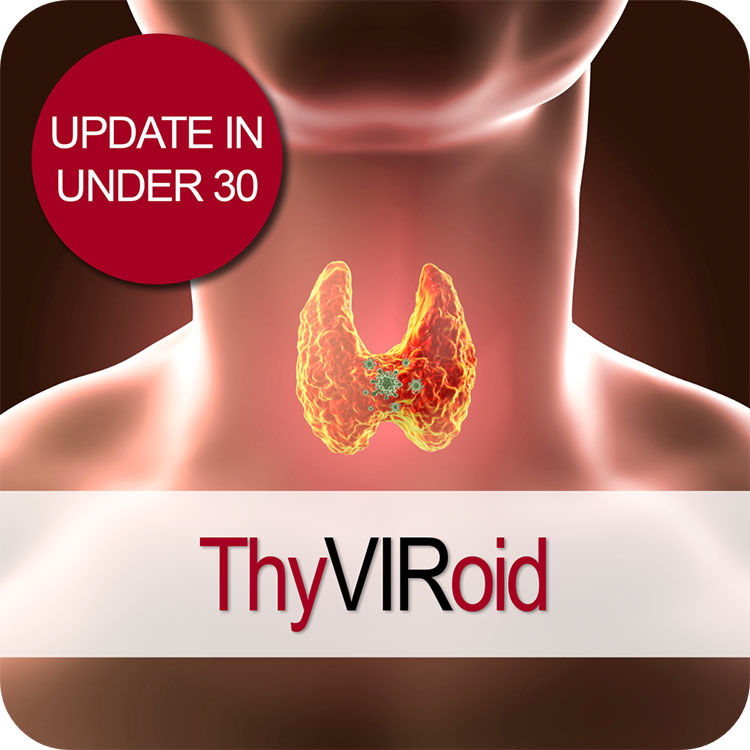 You can purchase ThyVIRoid here. If you are an Update in Under 30 Subscriber, you will find it waiting for you in your online account. You can become an Update in Under 30 Subscriber to access this episode and the entire library of Update in Under 30 audios and resources here.
You can purchase ThyVIRoid here. If you are an Update in Under 30 Subscriber, you will find it waiting for you in your online account. You can become an Update in Under 30 Subscriber to access this episode and the entire library of Update in Under 30 audios and resources here.The builder responsible for my reno arrived one day with a frown. When I asked him what was wrong – he said he’d just had his second high PSA result and now the doctor wants him to see a specialist. It was apparent that he felt this was a real cause for concern. Talk about raising a red flag to a bull 🚩🐂 Yes, of course you know what followed. I insisted on reviewing the results myself only to find the reference range provided on his report was not specific to his age – and if we adjusted up for this (as the science supports) his result is just 0.5 ng/mL above the expected value!
Now, remember he is a builder so, ‘0.5’ in his mind might well be on par with 5mm which apparently is a big deal…or so he keeps telling me every time I try asking for some weird unconventional thing for my roof, windows, walls, whatever!! So I still had to provide a little bit more detail for him to get perspective and to understand the true meaning (and lack of scary meaning) of his results.
This however is just a micro-illustration of a big problem in pathology – we all risk a lack of perspective but if we can get it back, aids us to see that seemingly ‘normal’ results are sometimes a concern, and so-called ‘concerning’ ones, non-significant. The incredible patient insights that can be gained from being able to measure & monitor actual quantities of things in our patients; nutrients to novel disease markers, precursors to end-products, all comes down to understanding how their values compare with…with what? With someone of a different sex and age? With ‘all adults 18-108!’? With any other pre-menopausal woman regardless of reproductive or cycle stage? With ‘the average’ adult given that this current definition is overweight & unwell? Who are we comparing ourselves and our patients to?
When I undertook my undergraduate training many moons ago – there was no education in blood test interpretation. But as soon as I got out into practice I found my patients had all these bits of paper filled with magic numbers that I felt certain might offer me insights and a deeper understanding of their whole health – and how to best help them.
I desperately wanted to decipher this foreign language and made it my mission to do so. I was lucky enough to meet and be paired with a kindred spirit, Dr Tini Gruner, who happened to be my supervisor when I returned to undertake my honours thesis. Together we pooled our knowledge, sought out & shared with each other yet more and found that, together with comprehensive case taking, it provided excellent scaffolding to our work-up of patient cases. Better than that, it created this baseline for patients, identified clear treatment objectives and we could measure the success of our interventions based on how their results did (or didn’t) respond to our interventions. It was (and still is) a totally thrilling way to practice.
We talk about there being both an art & science to medicine generally and certainly an integrative approach. Without the benefit of pathology interpretation, I felt too at sea at times, without quite enough of the science to check the accuracy of the ‘art’ and my speculation.
Being able to understand what each individual result represents and reflects, to know how to form meaningful comparisons – with external reference ranges that speak to healthy individuals of the same sex & life stage, derived from rigorous research – and also form a comparison with the patient themselves, to pick up on the most subtle and significant early alerts to an emerging pathophysiological or healing process – is the skill, I believe, we all need in health to complete the toolkit. That’s why I made it my mission to learn the language of labs, from a conventional & integrative interpretative perspective, and then to share this learning with everyone wanting and willing to take this baton from me (& Tini) and run with it 🏃♀️🏃
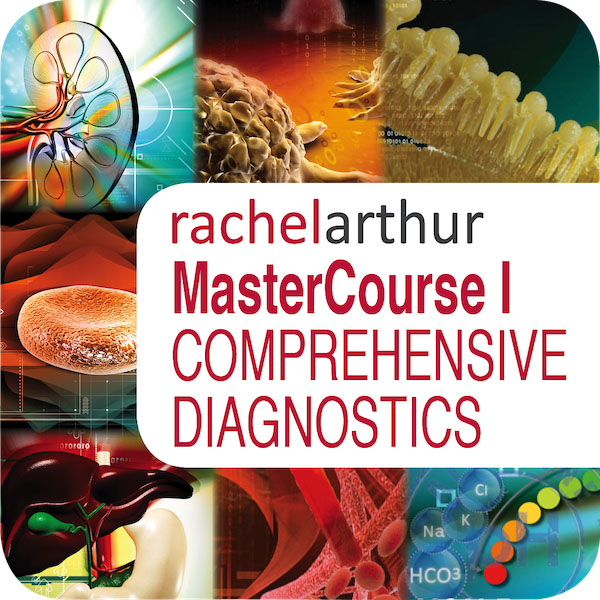
*Please note that this is the place to start for everyone wanting to add preventive diagnostics to their tool kit. It is also the pre-requisite for MasterCourse II, so make sure you have completed this before continuing with MasterCourse II: Thyroid and Adrenal Diagnostics.
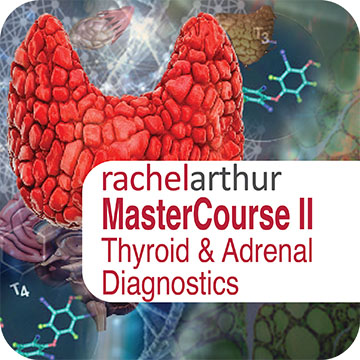
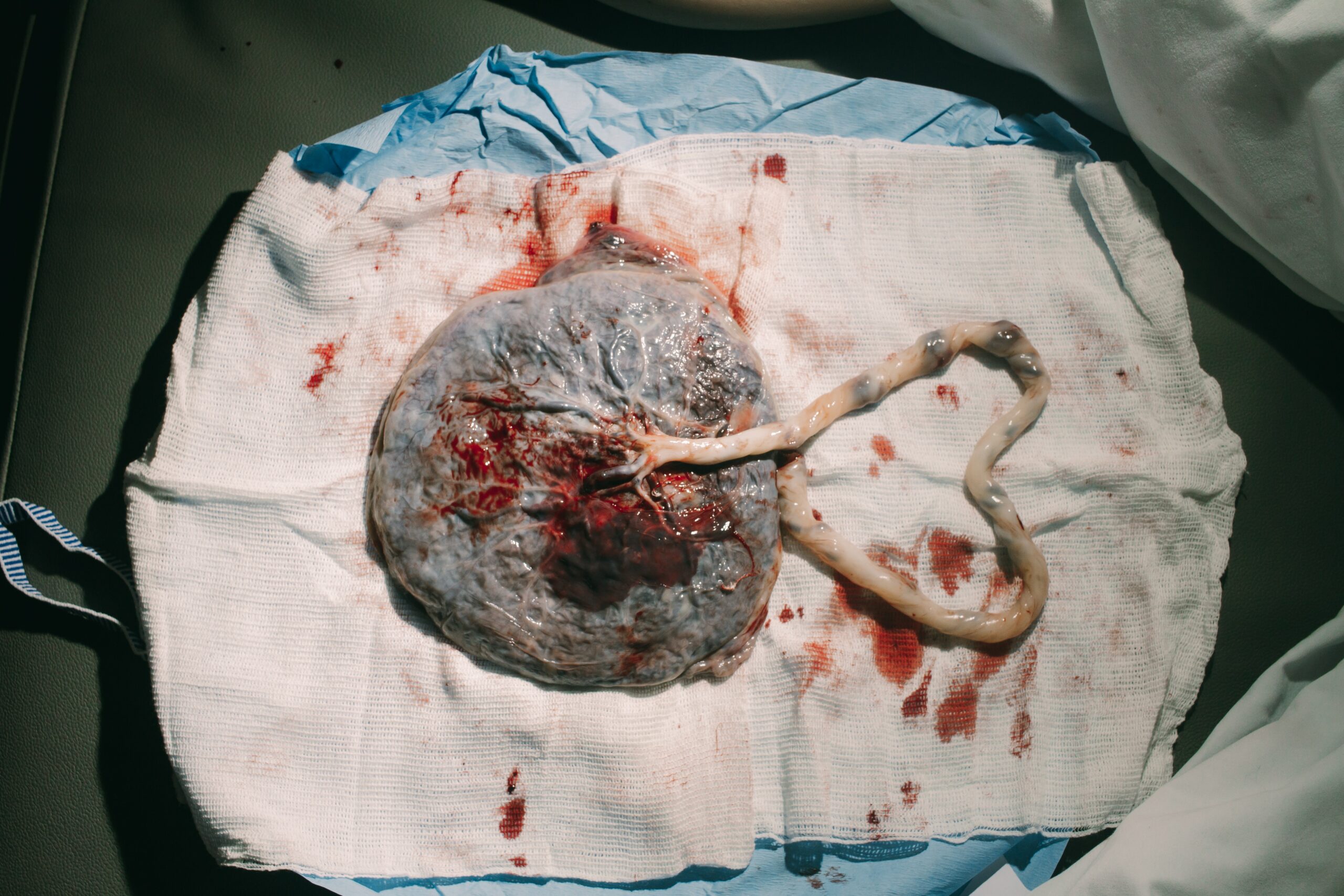

If I wrote down these 2 elements on a MindMap: Thyroid dysfunction and Adiposity, how would you connect them? Would you reflexively draw an arrow from the former to the latter to flag that the thyroid underpins the weight management issues? My arrow would be the other way around.
According to every scrap of data, the likelihood that someone’s subclinical or even frank hypothyroidism is the source of the excess weight is quite low, while the probability that their excess adiposity has had profound effects on both the anatomy of the gland and the physiology of the HPT is much higher.
And the change in the direction of this relationship – adiposity as the cause not the consequence – changes everything, from what we tell our patients, to what effective management, and success, in terms of follow-up TFT patterns, actually looks like. It’s far from semantics. Because while we may not encounter any cassava excesses in our practice, an established goitrogen with a long history, we do see unhealthy adiposity often and it is the ‘newest’ goitrogen on the block, so to speak.
The definition of a goitrogen is something that interferes with thyroid hormonogenesis and thyroid function in any way.
Abdominal adiposity, that is excessive for that individual, (I don’t believe this can be simply determined by BMI alone but requires us to apply a more sophisticated lens & metric) interferes in many many ways.
Aligned with this recognition is the seismic shift in understanding that we’ve undergone regarding ‘who or what’ is the boss of the thyroid. Hypothalamus & pituitary, I hear you say? Nope. These guys are just the middle managers – and the real bosses are a board of directors that includes adipose tissue. Stop and think about this – makes sense, right? The HPT is attributed with being the major endocrine axis that determines how much ‘energy’ we have to spend – so of course it’s taking direct messaging and direction from the adipocytes! Add to this, that excess energy consumption drives up TSH, a trophic agent for the gland – a stimulator of proliferation without differentiation and with no guarantee of an adequate supply of the greater requirements for micronutrients required to ‘grow a bigger gland’ without architectural or functional disturbance. These are just the 1st two stages of goitrogenic effect resulting from over-nutrition, that I refer to as The Over-Feed and The Under-Resourced Thyroid…
But what can follow are 2 more stages: ‘The Disturbed’ and finally, ‘The Diseased’ thyroid – which include pathophysiological processes such as adipocyte infiltration of the actual gland (akin to the liver infiltration in NAFLD) seronegative thyroiditis, as well as epigenetic changes impairing DNA correction etc etc all a consequence of weight gain…not the cause.
Thyroid dysfunction –> weight gain or Weight gain –> thyroid dysfunction…Time to rethink this relationship?
According to every scrap of research, the likelihood that someone’s subclinical or even frank hypothyroidism is the source of their excess weight is quite low, while the probability that their excess weight has had profound effects on both the anatomy of the gland and the physiology of the HPT is much higher. So rather than a reflexive assumption that someone who presents with weight gain or ongoing unhealthy weight should have their thyroid checked to see if that is the cause – the TFTs absolutely should be performed but instead to understand one of the key consequences of this excess adiposity. In this recording we highlight the 4 stages of impact, moving from: the ‘Overfed’ to the ‘Under-Resourced’, the ‘Disturbed’ and finally the ‘Diseased Thyroid’. The reversal of this relationship – adiposity as the cause not the consequence of thyroid dysfunction – changes everything, from what we tell our patients, to what effective management, and success, in terms of follow-up TFT patterns, actually looks like. We need to be alert and responsive to the most common and contemporary thyroid disruptor in our patients: fat is a goitrogen.
If you are an Update in Under 30 Subscriber, you will find it waiting for you in your online account. You can become an Update in Under 30 Subscriber to access this episode and the entire library of Update in Under 30 audio’s and resources here.
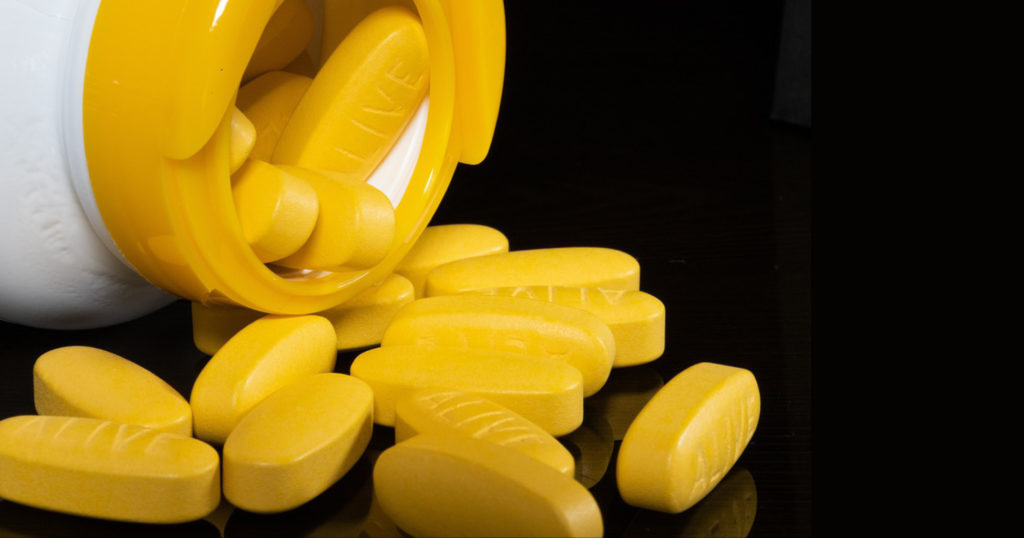
Gone are the days, thankfully, when we could all easily identify any individual taking an antipsychotic 1) because they were the marginalised ‘mad’ and 2) stigma and shame were rife. With the seismic shift that has occurred both in psychiatry & society we now know so many of the people we live or work with just might be taking ‘something’ & under any number of diagnostic labels. And increasingly the ‘anti-psychotics’ are not reserved for the psychotic nor the ‘mood stabilisers’ for the manic. Which can complicate things – especially when it comes to their thyroid.
The latest piece of evidence from a study of over 25K BPAD patients in the US tells us this common misunderstanding makes us prone to not recognise all the other patients in whom their psych meds are disrupting and in fact driving thyroid (dys)function. Though Lithium carbonate remains the most noxious goitrogen due to its multiple disruptive mechanisms – the rest of a large group of Psych meds (yes even antidepressants!) are impacting to the point of effecting the thyroid function test results you are likely to see in patients taking these. And this is something we need to be alert to – these medications are essential, non-negotiable in most scenarios, but a secondary hypothyroidism is not their intended goal and can make matters worse.
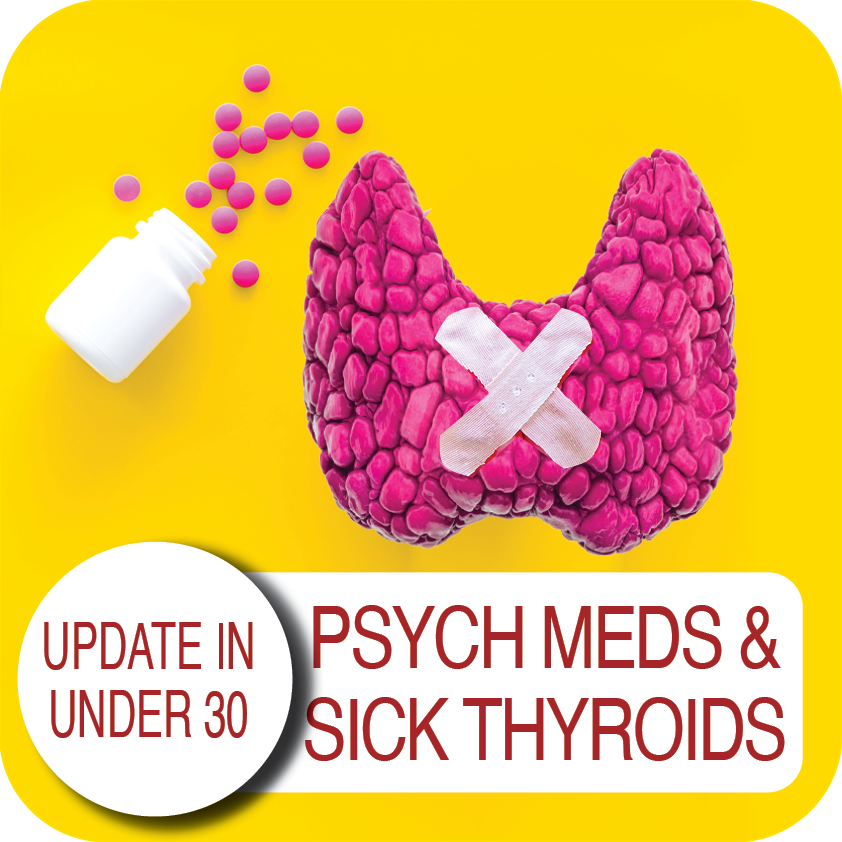
Have you been told somewhere by someone that the ‘perfect’ TSH is 1.5 mIU/L? This is a wonderful, terrible & wonderfully terrible example of ‘magical numbers medicine’. As a push-back against the published reference ranges we’re given, that are so wide you could drive a truck through them, there has been an over-correction by some, leading to the myth of ‘magic numbers’. We can narrow the reference range substantially for many parameters with good rationale, make no mistake about that but once we start setting ‘aspirational goals’ that are explicitly rigid…well we’ve done 2 things 1) forgotten about the patient to whom this result belongs and 2) disregarded viewing each result as part of a ‘pattern’, that we must piece together and make sense of.
Back to TSH then… if my obese patient had a value of 1.5 mIU/L this in fact would be woefully inadequate – so too a child at any weight.
And we expect a higher value as well in our elderly clients too and this level there may be, in fact, increased mortality.
But the same result would be excessively & worringly high in my patient who’s undergone thyroidectomy.
Realising the full value of any test result in terms of what it reveals about the person sitting in front of you, requires these more thinking and more thoughtfulness. Unfortunately, a list of ‘magic numbers’ will often lead you astray. And building your scientific knowledge about labs will not only help you avoid the pitfalls of pathology but will strengthen your pathophysiology prowess in surprising ways, saving your patients a packet in terms of additional extraneous testing and help you truly personalise your prescriptions…because the ‘invisible (biochemical individuality, oxidative stress, genetic probabilities, subclinical states, imbalanced or burdened processes etc) just became visible’. I started requesting lab results early in my career and years later was lucky enough to be taken under the wing of Dr. Tini Gruner. I found some of our shared notes, from 10 years ago, scribbled all over patient results recently and I was struck by just how lucky I was to have her encouragement to really pursue my interest and how she was a guiding force about learning to recognise pathology patterns over single parameters. A decade on I can concede, much of my clinical and educative success has come off the back of this foundational skill-set and I know, this is true for so many I’ve taught too.
“The guidance I’ve received over the years from Rachel in relation to pathology interpretation has been one of the most valuable (and fascinating) investments I’ve made as a clinician. Her teachings have filled gaps in my knowledge base I never knew needed filling and have significantly enhanced my understanding of the inner workings of the body! Rachel has an incredible ability to make the numbers that patient’s so often present us with, both understandable and clinically meaningful. The knowledge I’ve gained by investing in this skillset has paid off in dividends and I’m certain will continue to do so into the future.”
Stacey Curcio – Cultivating Wellness
I hope you’ll join me for the most exciting up-skilling opportunity in learning labs yet. Oh…and all this talk about thyroid testing..this next MasterCourse series is focused on revolutionising your understanding of thyroid, adrenal, HPT & HPA markers based on the very latest research & findings & marry these together with everything you learned in MasterCourse I (ELFTs, FBE, Lipids & Glucose) to understand the ‘whole story’.
…an absolute treasure trove of free integrative health information about your patient!
DEEP DIVE INTO REAL CASE STUDIES TO DEMONSTRATE EACH PATHOLOGY PATTERN IN ACTION. ]\
There are limited places. To sign up for Rachel’s LIVE Series – MasterCourse II: Thyroid & Adrenal Diagnostics
and for more information click here.
13 years ago I was first asked to contribute to ACNEM’s thyroid training
8 years ago I put together a little Masterclass on Diagnostics & 6 years ago co-created another one on Thyroid
2 years ago I dived deep into new literature to update my ideas & my teaching for ACNEM again & reinspired by all I had discovered
1 year ago I promised a new MasterCourse, for all those eagerly awaiting the next instalment: Thyroid & Adrenals
Now it is about to land!
Across this time I have fallen in and out of love with this topic. ‘In’, in the early heady days of learning some great tricks and tools, ratios and relationships between thyroid parameters (T4:T3, rT3:T3 etc) to aid interpretation but then ‘out’, when I discovered in my own patients and many others, that while this solved some thyroid patient puzzles, it left the curlier ones with questions remaining. I became unsatisfied with the simplistic stereotyping of the thyroid hormones (T3 important & always good, T4 not, rT3 never) and frustrated by the misapplication of ratios & lazy labelling of the thyroid as the ‘problem’. All of these things I intrinsically knew didn’t make good scientific sense and actually revealed a lack of depth in mine & our understanding. So I re-immersed myself in the very latest research and, wouldn’t you know it, in the time between there’s been a mini-revolution taking place in relation to our understanding of the HPT axis and the other endocrine circuits that manage it! Thank goodness for science!!
As a result, not a slide, possibly barely a dot-point remains from what I wrote back in 2009 and not a great deal more from 2015 even.
That’s how far the research has revolutionised my ideas & understanding.
Some of the assay techniques & technologies are new, there’s a river of research & a mountain of meta-analyses published in the time between & I have had the privilege of innumerable more clinical encounters in this space, to really nut out how all this translates into the real world. And most importantly I can confidently say that this training and teaching reflects the truly integrative nature of psychoneuroimmunoendocrinology…did I just make up a word?! Basically, if you think that the hypothalamus and/or pituitary is the boss of the thyroid – we need to talk! There’s a lot I need to catch you up on.
So like our first MasterCourse in Comprehensive Diagnostics earned us a reputation for, we are going to leave no stone unturned – no difficult question – unanswered, like…
So stay tuned… and watch this space! We thank you for your patience and know it will be worth the wait…
“Absolutely loved this course, I’ve listened to each of the recordings at least 3 times now taking furious notes and am still picking up new gems. Love that it’s helping me build up my knowledge and confidence in such a fundamental area of practice. The case studies are super valuable as they bring the labs to life, I’d be keen for more of these! Really appreciate all the extra PDFs / audios that have been added also. Eagerly awaiting MasterCourse II” – Naturopath | Australia
“Why wasn’t this content covered in medical school? As a psychiatrist, I have greatly benefited from attending this course which comprehensively covers the ins and outs of interpretation of pathology labs and how this applies to clinical cases – many of which have both physical and mental health considerations. I believe all doctors from general practitioners to specialists will gain from attending! ” – Psychiatrist | Australia
“Thank you so much for this course, it has been brilliant. It has ‘fuelled my practice’ and many people have benefited already – from such insights. It’s quite thrilling!!! I’ll definitely be signing up for the second course later next year” – Naturopath, Medical Herbalist | New Zealand
I’ve spent the best part of about 4 months recording my *NEW* Advanced Thyroid Assessment training. I told my team this would be easy and quick, given it was to be based on a great little 2-part, 2hr updated presentation I delivered just last year for ACNEM!! Sixteen weeks (like seriously…most of it) numerous rewrites and retakes later, our final product is 4 parts that goes for over 12hrs in total & has a bonus Adrenal recording! And yeah my team are impressed but unimpressed too if you know what I mean?!🙄🤪
Every time another, ‘Oh wow!’, or ‘No way!’, escaped my lips, it was a source of personal celebration, as another deeper layer of learning revealed itself.
But to the wonderful, somewhat weary and definitely wary Sally, who does all my powerpoints, it was met with, ‘Oh boy!’, because it meant many multiple new slides to build full of visual metaphors, animation acrobatics, if not an entire new Part!*#@^
Her sage advice along the infinite research road I’ve been travelling was : ‘Stop. You’re going to have to stop.’
So I did but now I am this meme. Everything I see currently through the lens of thyroid health, I talk in tongues TFTs and my brain is one giant neural network of integrative endocrinological circuits! I have fallen in love with this topic, this neuroendocrine axis and its ‘first responder’ role all over again! Hence our little thyroid character below – all ‘antennaed’ up – is one of the many tools we’ve developed for this training, to teach us that ‘bad thyroids’ per se are extremely rare – but bad scenarios are common (too much or too little of any macronutrient, key micronutrients, a change in the internal or external environment etc etc) and this little fellow and his board of directors (no – not the hypothalamus or pituitary!) – well it’s their job to ‘read the room’, right?!
In the absence of this key understanding we risk:
A lot of lazy labelling in thyroid health – ‘You have a bad thyroid – that’s why you…[can’t lose weight, feel tired, have SIBO etc]’
Misdirected treatment & especially a tendency to overload the butterfly with ‘thyroid’ nutrients – which can do more harm than good
I’ve said many times, ‘perfect number pathology is a myth’ but it runs rife in practitioners’ beliefs about TFT results with complete disregard of the person those labs belong too! Did you know, for example, that your TFTs should all be higher if your BMI is? That your T4:T3 ratio should never be 3:1 if you are on replacement, have hot nodules, are pregnant or are acutely unwell etc etc etc? How about how low your Selenium or Iron levels need to be before this factor will influence the actual levels of thyroid hormones measurable – & what the impact of these deficiencies are well before then that is far more sinister and serious? Yep…you see here I am, pouring just some of the tiny take-homes of Advanced Thyroid Assessment ALL over you!
Watch this space my new Thyroid training is just around the corner!
Are You Running Hot & Cold on Thyroid Nodules?
I’m intrigued by the silence. Hair loss in women is frighteningly common, following pregnancy, menopause & with extreme stress (wait is that a tautology? 🙄) In fact it can strike at any age and for a multitude of reasons. When it happened to me a few years back I also initially responded with silence, terrified that if I said it out loud it would make it real, but when my daughter suddenly asked, ‘Mum are you losing your hair?’ with her trademark attention to detail & exquisite empathy, she gave me the words & a good kick into gear, simultaneously. Now I am fascinated by women’s silence around this generally, how little we share our stories & forewarn others, & as practitioners, the lack of adequate training we’ve had identifying the different types (hint: it involves donning gloves or if restricted to online consulting, knowing how to organise correctly positioned pics) & from there finding the right solutions.
While Female Pattern Hair Loss (FPHL) is the dominant type in women – it only applies to the following pattern:
But alopecia due to stress, thyroid disorders, autoimmunity, contact dermatitis etc will affect different regions of the scalp and with a different onset & progression.
And remember, by the time YOU, the practitioner, can spot a patient is losing hair when they simply walk into the room, they have ALREADY LOST 50% 😢 This is why I think we need to push back against the silence. The research is unflinching about the serious psychological impact this has on women – especially in cultures which place so much emphasis on looks generally, and hair, specifically as a commodity of very high value in women. The diagram above comes from a 2019 update on the phenomenon of FHPL and it’s a good articulation of the knowns and unknowns (pssst spoiler alert…it ain’t about androgens!) but let’s never forget the other causes and cures. So let’s make sure as the trusted practitioners women present to so often, we are sensitive enough to have this tricky conversation & skilled enough to help 💪
Stop Pulling Your Hair Out – The FPHL Answers You Need
Female Pattern Hair Loss (FPHL) is everywhere, perhaps you just haven’t been looking. As the leading cause of alopecia in women globally and with 1 in 5 women affected at any age, we’ve all got clients who have FPHL to different degrees. We need to be better able to recognise the early features of this condition which profoundly impairs quality of life and induces depression in its sufferers and that begins with validating patients’ concerns when they report “thinning” or “increased losses”. But what do we do from there? This recording talks you through the assessment, diagnosis and management of FPHL based on a combination of the most recent research and Rachel’s clinical experiences. Once you’ve ‘seen’ FPHL.., you won’t ever ‘unsee’ it and your patients will thank you.
My how the time just flies when you’re chasing answers from private pathology companies! As Brisbane based naturopath, Sandi Cooper, can attest to having recently been down the seemingly eternal email trail with a pathology company trying to ascertain if their urinary iodine result accounts for the concentration of the urine sample (via the iodine:creatinine) or doesn’t….because of course it can make the world 🌎 of difference. Like clarifying that someone who appears to have very little iodine in their urine, actually has a lot or vice versa! I wrote about this back when I was a mere ‘babe blogger’, more than 5 years ago. After recently reading this historical document, Sandi has been practising due diligence and checking with her providers whether they have already corrected for creatinine..or whether she needs to herself and she shared that multi-departmental epic email endurance event thread with me. The short answer? They used to and now they don’t. Why? Oh…formatting issues or something 🙄
But just in case you do want the ‘short answer’ regarding your particular pathology provider…without emailing enigmas…the answer is, in fact, in front of you & it’s Super Short!
If your patient’s urinary iodine result (random or 24hr) is reported using the units on the left, sometimes actually written mcg/grCR, then BiNGo! The pathology provider has done the creatinine correction for you. If they only report the urinary iodine results using the units on the right…it’s time for some maths to avoid misinterpretation. No one panic, the formula is easy: Iodine (mcg) ÷ Creatinine (mmol) X 8.85 = Corrected Iodine. So don’t lose time sending endless emails like poor Sandy or placing countless calls, like poor Nina on my team…who has to pursue pathology providers on an almost daily basis for answers to our zillions of sensible questions!! Just check the units! You’re welcome everyone 😉 oh thank you Sandi for chasing this again and sorry about needing to chase this again! 😳
And if all of this is nEWs to yOU, you might want to review what you thought you knew, about Comprehensive Thyroid Assessment too!
We can never rest when it comes to learning more about the individual nuances of our patients thyroid pictures! In this 90min recording, Rachel covers the key thyroid parameters both functional & autoimmune (TSH, T4, T3, rT3, TPO, TgAbs, TRAB). As well as the most accurate methods of assessing relevant thyroid nutrients: iodine & selenium & a genuinely game-changing insight on interpretation of these . Finally she pulls all the individual parameters together to illustrate common patterns of thyroid imbalance – making it almost as easy 1-2-3! Well, hey..it’s the thyroid…a fickle fellow.
What’s the most common thyroid disease you’re seeing in practice? Nope, try again. I’m serious. There would be very few of us who’d get this right without cheating. It’s nodules. Current figures suggest 1/2 of all us middle-agers have them and by the time we’re 80 that’s risen to 90%! There’s a school of thought that says these figures have jumped purely because of increased rates of thyroid imaging and we should stop sticking our nose in places it doesn’t belong. Just because they are there doesn’t mean we need to know about them or that they are causing trouble. All this is true and yet there is a percentage of patients for whom these nodules are a whole lot of trouble, in fact, that’s why they’re coming to see you…they (& possibly you!) just don’t know it yet.
Nodules, outside of radiation exposure, have always been primarily viewed as a nutritional deficiency disease: Iodine. While this was always a bit one-dimensional (poor selenium…when will you ever get your due?) it’s an explanation that no longer fits as well as it once did because even in populations who have addressed iodine deficiency, the incidence of nodules continues to rise.
So, what now?
New nutritional drivers have been identified but rather than being about our deficiencies they speak to our nutritional excesses. And while iodine is not totally out of a job here, some people of course are still experiencing long-term suboptimal iodine which can trigger nodule development, we now need to question if there is any therapeutic role for iodine once the nodules are established. Well the answer is both ‘yes, maybe’ and ‘absolutely not’. The determinant being whether we’re dealing with Hot or Cold. Unfortunately most patients and therefore their practitioners can’t tell the difference. But it is the presence or absence of a hot nodule that radically changes what complementary medicines you can and can’t use and what an effective treatment plan looks like.
I’ve seen a lot of thyroid nodule cases pop up in mentoring this year and it’s been a great learning opportunity for everyone to get comfortable with clues in both patients’ presentation & their pathology. While iodine deficiency no longer ‘fits’ like it did, nutritional medicine should arguably remain the primary approach to their management and the new research gives even more credence to this and identifies a far greater range of dietary and supplemental tools.
Thyroid nodules are going to explain a surprising number of our subclinical (hypo and hyper) thyroid patients and we already have a dispensary full of powerful interventions but we need to start by familiarising ourselves with their story: their why (they happen), their what (this means for patients) and their how (on earth are we going to address these effectively) Knowing your Hot from your Cold…is step one.
I had to say to a mentee just yesterday, “You’re going to see the topic for the Update in Under 30 this month and think it’s inspired by your patient but it was actually about the 3 other cases I’d seen this month, before yours!” Yep…I’m talking about thyroid nodules, which happen to be hot (pardon the pun) right now. But they’re not always hot, right? I mean, they are always a good topic for discussion because so many of our clients thyroid issues are due to these but nodules come in 2 flavours: hot and cold. And knowing the difference is about as important as knowing your left from your right 🤲
“Oh Iodine the panacea of all things thyroid (tongue firmly in cheek) – can you fix nodules as well?” chorus the masses
Honest (salt of the earth!) Iodine Replies, “No & in fact I may make some nodules worse!”
Sorry for the re-enactment of this little local theatre piece in my head…it’s been a big week. Hence the marionette…ah yes it’s all becoming clear now 🙄 But it seems this isn’t common knowledge because a mentee presented a case this week of a 39 year old female who has confirmed multiple thyroid nodules that had prior to seeing her, seen another practitioner who put her on high dose iodine with the reassurance “there’s nothing wrong with your gland that iodine can’t fix”..or something to that effect. Oh boy 🤨
“Tell us! Tell us what happened next!” the chorus chants
Well it looks like as a result of the iodine, her cold nodules just might have switched to hot…that’s bad news all round I am afraid 🙁 But if we all knew our nodule nutrition better, this wouldn’t happen.
Next week our October UU30 release becomes available: Can you tell you tell your Hot from your Cold in Thyroid Nodules?
Our Update in Under 30 Subscription allows access to the ENTIRE back catalogue of podcasts in addition to all podcasts released over the next 12 months. We are currently offering the Premium at a reduced SALE price of $239 (excluding GST) for 12 months. This Premium Subscription is worth its weight in gold! With a total value of over $1800, you receive each month a new podcast and access to the ENTIRE back catalogue to the value of $20/month (ex GST).
Stop press. No, seriously. This new research warrants the attention of every practitioner working with children & teenagers. In the largest paediatric study of its kind to date, which included 2,480 children aged 10-18yrs diagnosed with hyperthyroidism (Grave’s or otherwise), Zader & colleagues found
What is most alarming of course is that these mental health diagnoses were made in half of these children >3 months prior to the diagnosis of hyperthyroidism. What does this mean? It means we are missing this critical biological driver in this patient group. We all recognise the potential for some psychological presentations people affected with thyroid conditions, however, perhaps we are more alert to this in adults and letting it slip off our radar in kids? There’s been renewed talk about the over- and mis-diagnosing of ADHD lately and given that research has found up to 80% of hyperthyroid children meet ADHD diagnostic criteria this is one of the 1st place arguably to look! It also means, as these researchers discuss in detail, these kids are being medicated with psychiatric meds that in fact may, at the least mask their abnormal thyroid, lead to the incorrect diagnosis of hypothyroidism (lithium & even stimulants for example) or exacerbate their hyperthyroidism (quetiapine). But wait there’s more and it’s essential to understand.
Zadar & colleagues note that while we can not be 100% clear about the direction of the relationship…e.g. were these children already at risk psychologically and the hyperthyroidism just exacerbated that, they note that correction of the TFTs does not always equate to ‘cure’ of the mental health issues. This is not entirely surprising of course. What the problem emerges via a combination of biology and psychology & we resolve or remedy the biology…guess what you have left? PLUS the learned behaviours etc from suffering from anxiety, impaired cognition, suicidality they’ve been battling at the hands of excess T3 and a subsequent tsunami of reactive oxygen species.
This is one of those papers we should all have to read top to toe and therefore ideally be able to access for free but alas 🙁 What you can read is the Medscape review of this, which is a reasonable summary but the full paper is worth it if you can. You know the other key take home here…the diagnosis of hyperthyroidism was only made with overt out of range TFTs… which begs the question what about all those subclinical hyperthyroid cases we know exist? Yes, no wonder this paper has RACHEL’ S FAVOURITE written all over it…paediatric thyroid assessment and missed biological drivers of mental health and the opportunity to get better at both…can my research reading get any better this week?!🤓
Currently in Australia there is limited use of age specific reference ranges for thyroid parameters in children & teenagers yet they are essential for correct interpretation and diagnosis. Even doctors & specialists seem to be at a loss with diagnosing thyroid problems in kids unless they are extreme presentations. Subclinical thyroid presentations, however, are increasing in both children and adults. Many practitioners competent in adult thyroid identification & management are less familiar and confident with knowing when why and how to test in this population. Make sure you’re not missing thyroid imbalance in your paediatric patients…early detection makes treatment easy.
Horses not Zebras. You’ve no doubt heard me repeat that quote which is famous in medical schools, something to the effect of, “When you hear a herd of animals outside your door, think horses not zebras”…unless of course you are practising in Africa might I suggest 😉 This of course reminds us all in short to think of the most likely explanations not the most exotic first. Likewise with our case taking. The number of times I ask practitioners for the ‘boring basics’ and am met with an embarrassed silence. Think:
Body Mass Index
There I said it…and yet these are like dirty words in integrative health. Why? Because we’re starting to ignore the ‘boring basics’ in favour of getting ‘fancy first up’, as I like to call it. Look I love a good bit of bioelectrical impedence assessment as much as the next clinician and I am not about to use this crude measure as replacement for that but I absolutely need to have these key landmark pieces of information to understand a very long list of things such as contribution to future health risks, current burdens from literally the weight on those joints leading to knee pain, to the weight/mass not pulling on their bones and therefore contributing to lower BMD their whole life. Even their likelihood of a leaky gut today, right, Brad Leech, our colleague and impressive IP researcher? BMI drives also the appropriateness and their capacity for any exercise interventions I might recommend, not to mention the frequently mentioned, accurate interpretation of their labs.
For many many labs that we routinely see for our clients…the reference range should actually be a sliding scale that moves with BMI…what do we really ‘expect’ and what is actually ‘healthy’ is different at different weights.
Like TFTs – this may be a big newsflash for most but I never want to see a patient with a BMI > 30 have a TSH anywhere < 2, unless they’re on replacement.
Say wha? You heard me. I promise I’ll tell you more about that soon.
But again…let’s not get fancy first up especially not in any of our paediatric patients and in spite of what their words or ‘tude may be telling you, that includes all the way up to 18 in our books! Brace yourself, I’m going to speak that dirty word again…BMI..boring basics before all else. We need to review their height, weight and BMI against paediatric growth charts. These oldies are goldies and can reveal so much about growth trajectories, puberty milestones when any other discussion is off the table, type 2 nutritional imbalances (protein, zinc, potassium, magnesium, sulfur) and flag all other sorts of concerns or reassurance…and you haven’t had to steal a drop of blood or any much hard earned money off mum and dad to work a lot out. Anyway, that’s my ‘boring basic beef’ for now…there’s a lot to be said for ensuring such ‘dirty words’ come before everything else.
Need help with wrestling all the most important patient information into a clear management plan?
As integrative health practitioners, we pride ourselves on taking in the ‘whole health story’ as a means to accurately identifying all the contributors & connections to each patient’s presenting unwellness. In the process, we gather a wealth of information from each client – pathology, medical history, screening tests, diet diaries etc. that borders on information overload and often creates so much ‘noise’, we struggle to ‘hear’ what’s most important. The management of complex patient information and the application of a truly integrative approach, requires due diligence and the right tools. Mindmapping and Timelines are two key tools to help you go from vast quantities of information to a true integrated understanding of what is going on in the case and the more time we spend learning and applying these tools, the more they will write the prescription for you. Not just for today but for the next 6-12mo for that patient.
So we already know that thyroid problems can start in utero, right…but a recent Medscape review (the fountain of thyroid information that I frequently drinketh from 😉 ) on Hypothyroidism in childhood taught me a couple of big things I hadn’t known before!
The diagnostic criteria for subclinical hypothyroidism are raised TSH levels in combination with a normal concentration of free serum thyroxine (FT4) but because there are some differences between accepted ranges in TSH assays, high-risk groups should be screened, especially babies with malformations, whose mum received steroid treatment during pregnancy or in the neonatal period, or who had existing thyroid dysfunction, TFTs (or at the least TSH as part of what’s called the Neonatal Screening test) should be repeated 2 weeks later. But now comes the couple of big light-bulb moments: the incidence of eutopic thyroid in twin births is nearly double compared with singletons! As you know, I’m a mother of twins and I’m guessing at 18yrs old now (and multiple peachy TFTs 😉 ) the horse has well and truly bolted for my two but geez…I had no idea of the dramatic increase in risk. And it keeps going…monozygotic twins very commonly show a delayed TSH rise and those numbers are even more prominent in multiple births. The other not-so-fun-fact is the discovery that subclinical hypothyroidism in IVF babies is approx. 10% which is noteworthy considering none were observed in the control group.
This obviously left me thinking “W.H.Y?” And of course…the first place my head goes with the latter…is iodine.
Could this phenomenon in IVF babies be due ultimately to undiagnosed or poorly managed SCH in mum or even simpler still, just basic iodine deficiency, presenting as infertility?!
The reasons behind our increasing rates of thyroid dysfunction across the life-stages are multifactorial (and don’t get me started on the very real contribution of EDCs!) and how, in spite of iodine adequacy being the first thing on the checklist for thyroid health, so many health professionals ignore this, at their patients’ peril… But now at least we know that patients with IVF babies, twins, and preterm bub, who are currently not included in the prioritised screening groups should be…and of course we should keep asking the questions, “what are the mechanisms behind this, why is it so?”
So if this has made you even more curious about the incredible butterflied-shaped gland and you’d like to go for a stroll on the vast plains of “thyroidisms” you can click on this link Thyroid Assessment in Kids and Teenagers and get completely “thyroided” up. There is always more research to come our way so keep your eyes and ears peeled.
Too many times we see thyroxine treated patients on the ‘set and forget’ setting. Often, they’re taking the same dose they started on a decade or so ago, in spite of weight changes, ageing of course and new comorbidities. They’ve undergone limited monitoring, with just an annual in-range TSH viewed as confirmation of efficacy. But is it? Many patients’ re-emerging hypothyroid signs and symptoms would suggest not.
A recent Medscape review article of a large study by Gullo et al 2017, identifies another shortcoming in the rudimentary way we ‘replace thyroid hormone’, in all patients but especially in those who’ve had their thyroid removed. (more…)
“Researchers followed more than 500 women trying to conceive over about five years and found that, overall, those with moderate to severe iodine deficiency had 46% lower odds, per cycle, of becoming pregnant.”
All researchers dream of generating the kind of results that are ground-breaking but sometimes you read about the latest study’s findings and you think, ‘Really, you spent all your time & cleverness for years on this and that’s all you have to show for it!’ Like the study that finally confirmed dog’s can feel empathy (at last thank goodness …phew…cos I had my doubts until they crunched the numbers!)
So too a study published this month on the possibility that iodine deficiency is common in women trying to conceive in developed countries and may be connected to increasing fertility issues.
Stop press! I know…that made you spill your coffee! (more…)
Just because most of us have been on holidays doesn’t mean the thyroid knowledge wagon has stopped or even slowed! Always amazed at what we continue to discover about the complex working of this amazing gland and how its health impacts so much of the rest of the body and of course our babies’ bodies! So I thought I’d give you a quick recap of an important study published while you were at the beach/in the bush/in bed ;)…
When we consider the substantial evidence of poorer maternal cardiometabolic outcomes for women who are hypothyroid during pregnancy – it would seem that the abnormal thyroid hormones are most impacting for mum but in fact the TPO Abs the most detrimental for bub! (more…)